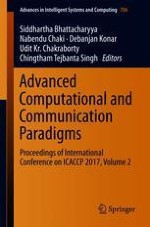The book titled Advanced Computational and Communication Paradigms: Proceedings of International Conference on ICACCP 2017, Volume 2 presents refereed high-quality papers of the First International Conference on Advanced Computational and Communication Paradigms (ICACCP 2017) organized by the Department of Computer Science and Engineering, Sikkim Manipal Institute of Technology, held from 8– 10 September 2017.
ICACCP 2017 covers an advanced computational paradigms and communications technique which provides failsafe and robust solutions to the emerging problems faced by mankind. Technologists, scientists, industry professionals and research scholars from regional, national and international levels are invited to present their original unpublished work in this conference. There were about 550 technical paper submitted. Finally after peer review, 142 high-quality papers have been accepted and registered for oral presentation which held across 09 general sessions and 05 special sessions along with 04 keynote address and 06 invited talks. This volume comprises 77 accepted papers of ICACCP 2017.
